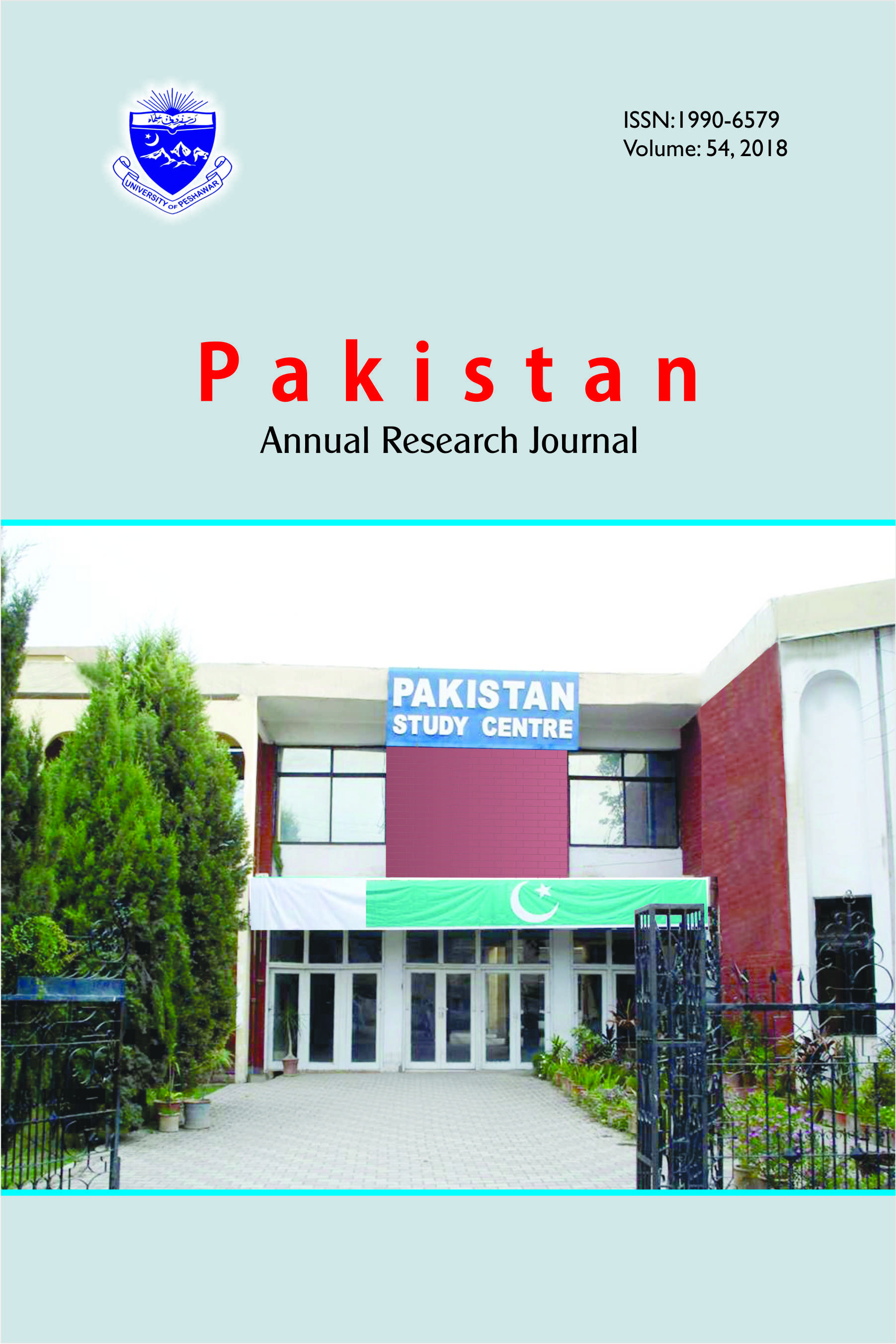DETERMINANTS OF MIGRATION AND FAMILY SIZE WITH LEVEL OF EDUCATIONAL ATTAINMENT IN CHITRAL, PAKISTAN
Keywords:
Hijrah, Education, ChitralAbstract
The research article of the study as “Determinants of migration and family size with level of educational attainment” (with special reference to District Chitral, KPK.). out of total 5000, a sample of 500 (250 migrants in Peshawar and 250 respondents of their dependent families living back in district Chitral) was chosen for the collection of primary data through simple random sampling method. Interview schedule as a tool for collection of data was used in the targeted areas . Chi-square test was used to digout the association between dependent and independent variables. The findings of the study explored that a non-significant (P=0.168) association between nature of education and family type was found. Likewise, a non-significant (P=0.771) association was disclosed between years of schooling and family type. In same way, a non-significant (P=0.003) association was also found between occupation of the household and family type. In contrast to above results, a significant (P=0.029) relationship was found between pre-migration occupation of the respondents and family type. Also, a significant relationship (p=0.024) was explored between number of members in the family and family type. It is suggested that poverty and un-employment were the main push factors, which have compelled the respondents to leave their area of destination to other parts of the country especially Peshawar was suggested as a policy recommendation.
References
Tafseer Ibn Kathir, Vol. 2 p. 285
Ismail bin Kathir. al-Syrah al-Nabawiyyah. Vol. 2, (2007), p. 9-10. The pages are based on the electronic version of the text which is available at www.alwarraq.com. Accessed on 4/8/2007
Muhammad bin Jarir al-Tabari. Jamial-Bayan, chapter 59, verse 9, (Beirut: Muassasat al-Risalah, 2000)
Government of Pakistan. Economic Survey of Pakistan 2002-03, (Economic Advisor Wing, Finance Division, Islamabad, 2003): 181
Manner, C. K. A Model of Rural-Urban Migration and Fertility. The journal of developing Areas, vol. 37 No. 1. (2003): 55-71.
Karim 1984
Shasta, L. A. The costs and returns of human migration. Journal of Political Economy, 70 (5), (1962): 80-93.
Manner, C. K. A Model of Rural-Urban Migration and Fertility.The journal of developing Areas, vol. 37(1), (2003): 55-71.
Sovani, N. V. Urban Social Situation in India., Arthavinjana, vol. III (2). 10 South-East Europe Review, 4 (3), (1961): 39-41
Hill, P. Rural Hausa, A Village and Setting. (Cambridge University Press, 11 Cambridge, 1972).
Rogaia (1997)
Yadava, K.N.S. Determinants, Patterns and Consequences of Rural-Urban Migration in India. (Independent Publishing Company, Delhi, India, 1988)
Boyle, P ., Halfacree K., and Robinson. V . Exploring Contemporary Migration, (Pearson Education Limited, Addison Wesley Longman Limited, United Kingdom, 1998).
Husain, M. Geography of India. (Tata McGraw Hill Publishing Ltd, New 15 Delhi, 2001): 16.
Singh, S.N. and Yadava, K.N.S.On Some Characteristics of Rural Outmigration in Eastern Uttar Pradesh. Society and Culture, vol. 12 (1),
(1981): 33-46.
Kuhn, R. The Logic of Letting Go: Family and Individual Migration from
Rural Bangladesh. Doctoral Dissertation, Graduate Group in Demography, 17 (University of Pennsylvania, U.S.A., 1999)
Murphy, R. How Migrant Labor is Changing Rural China. (Cambridge: 18 Cambridge University Press, 2002)
Yadava, K.N.S. Determinants, Patterns and Consequences of Rural-Urban Migration in India. (Independent Publishing Company, Delhi, India, 1988)





